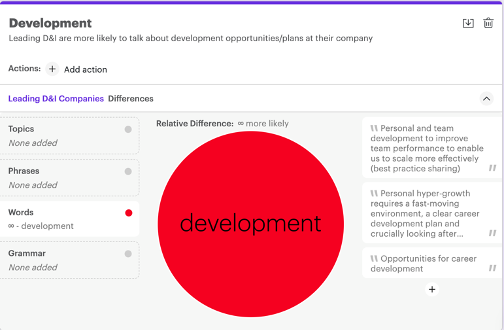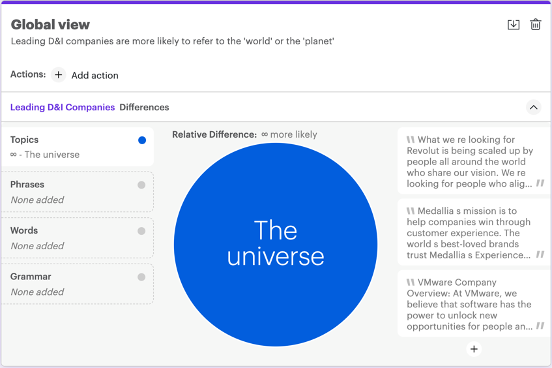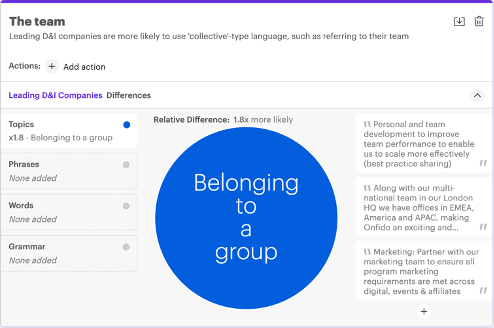How do tech organizations attract diverse talent?

By April Turner
With the growing list of companies coming under scrutiny around how they attract talent, ensuring diversity and inclusion is at the top of their agenda, it seemed like a great opportunity to figure out where it is they are going wrong? Or in some cases, looking at how the best tech companies who are doing it right.
My job at Relative Insight is to source top and very diverse talent across a multiple of disciplines – we’re interested, not just in academic accolades and a banging career history – but in people’s backgrounds, and their side-hustles and the things they do after work, and what their favourite cheese-based snack is, and so I was interested to see how other tech companies are doing it.
In order to run a comparison, I looked at job specs from tech organisations who feature in Forbes list of the best employers of diversity in the US, and the Financial Times‘ list of the top 700 European companies ranked for inclusion in order to discover what it is they are saying to help attract talent from the range of ethnic backgrounds – and the results were pretty eye opening.
What can your company do for you?
It is evident that companies highly ranked for D&I in the technology space often refer to the training and development opportunities for prospective employees within their organisation, and these two things are mentioned infinitely more than any other word within the data set.
Some of the specific language and sentences I discovered talked about “personal growth”, “career development” and “growth opportunities” – and so if you’re trying to attract talent from a diverse range of backgrounds, then these are the type of words that resonate.


Going global:
Interestingly, the organisations we looked at in the US are more likely to refer to the “world” or the “planet” in their job specs than companies in the UK who are more likely to talk about the “vision” of their solution and the people supporting the growth from around the world.


Let’s be part of a group:
Finally I noticed a lot of talk around referring to requirements of potential candidates as “working as a team”, “being collective” and “belonging to a group”. It makes sense that companies who are known for inclusivity use inclusive language in their specs, and make it clear from the start that they are interested in candidates who highly value teamwork, and creating team moral from the off. It’s obvious when we put it in these terms, but sometimes the obvious that can be overlooked.


We can link these inclusive words back to the training and development discovery, where we noticed ongoing internal support throughout the company and using language to make everyone feels equal and supported, before they’ve started their new job.
The language a company uses in job listings shapes the type of applicants they attract. Tone of voice and messaging reflect a company’s values and culture, bringing in potential employees who share that perspective.
Relative Insight can compare any language data set you can imagine, literally anything with words. Get in touch to see the platform in action.